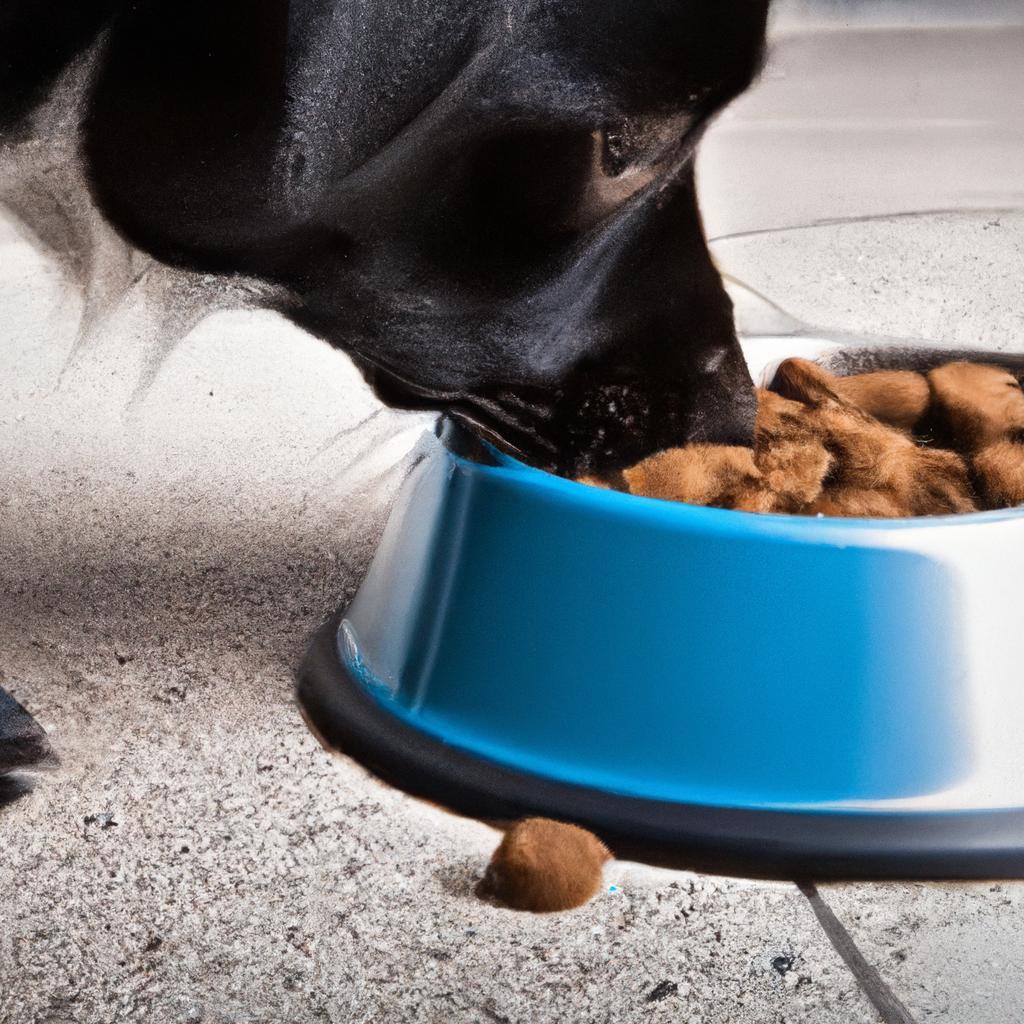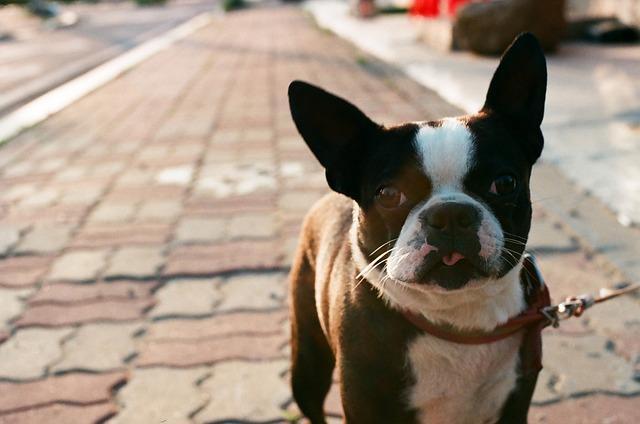Imagine coming home after a long day, only to find your dog staring at an empty bowl, tail wagging in anticipation. You’ve left dry dog food out all day, thinking it’s convenient. But is it really okay? While dry food can be left out for a few hours, prolonged exposure can lead to stale kibble, loss of nutrients, and even attract pests. To keep your furry friend healthy and happy, consider portioning meals and storing food properly. A little effort goes a long way in ensuring your dog thrives!
Contents
- Understanding the Nutritional Needs of Your Dog Throughout the Day
- Evaluating the Freshness and Safety of Dry Dog Food Left Out
- The Impact of Leaving Dry Dog Food Accessible on Your Dogs Behavior
- Best Practices for Feeding Schedules and Portion Control for Optimal Health
- Q&A
Understanding the Nutritional Needs of Your Dog Throughout the Day
When considering your dog’s dietary habits, it’s essential to recognize that their nutritional needs can vary throughout the day. Dogs, much like humans, benefit from a balanced intake of nutrients that support their energy levels and overall health. Leaving dry dog food out all day may seem convenient, but it can lead to overconsumption and potential health issues. Understanding how to manage your dog’s feeding schedule can help maintain their well-being.
Dogs thrive on routine, and establishing a consistent feeding schedule can help regulate their appetite and digestion. By offering meals at specific times, you can monitor their food intake more effectively. This approach not only prevents overeating but also allows you to observe any changes in their eating habits, which can be crucial for identifying health concerns early. Consider the following benefits of scheduled feeding:
- Weight Management: Controlled portions help prevent obesity.
- Digestive Health: Regular feeding times can improve digestion.
- Behavioral Benefits: Dogs may exhibit less anxiety when they know when to expect food.
Moreover, the type of dry dog food you choose plays a significant role in meeting your dog’s nutritional needs. High-quality kibble is formulated to provide essential nutrients, but it’s important to ensure that it aligns with your dog’s specific life stage, size, and activity level. Always check the feeding guidelines on the packaging and adjust portions based on your dog’s individual requirements. This tailored approach can enhance their energy levels and overall vitality throughout the day.
Lastly, consider the environmental factors that may affect your dog’s eating habits. Leaving food out all day can attract pests and lead to spoilage, diminishing the quality of the food. Additionally, some dogs may become picky eaters if they have constant access to food. To promote a healthy relationship with food, aim to create a structured feeding environment that encourages your dog to enjoy their meals while ensuring they receive the nutrition they need at the right times.
Evaluating the Freshness and Safety of Dry Dog Food Left Out
When considering the safety of dry dog food that has been left out for an extended period, it’s essential to assess several factors that can impact its freshness and your pet’s health. Dry dog food is designed to have a long shelf life, but once exposed to air, moisture, and varying temperatures, its quality can deteriorate. To ensure your furry friend is eating safe and nutritious food, keep an eye on the following:
- Storage Conditions: Dry dog food should ideally be stored in a cool, dry place. If left out in a warm or humid environment, the risk of spoilage increases significantly.
- Time Left Out: Generally, dry dog food can be left out for a few hours without significant risk. However, if it remains out for an entire day, it’s wise to inspect it closely before serving.
- Signs of Spoilage: Look for any changes in color, texture, or smell. If the food appears clumpy, has an off odor, or shows signs of mold, it’s best to discard it.
- Insect Contamination: Leaving food out can attract pests. Always check for any signs of insects or rodents, as these can pose serious health risks to your dog.
Moreover, the nutritional value of dry dog food can diminish when exposed to air and light. Vitamins and minerals may break down over time, leading to a less nutritious meal for your pet. This is particularly concerning for dogs with specific dietary needs or health issues. To maintain the integrity of the food, consider using airtight containers that can help preserve freshness and protect against environmental factors.
- Feeding Schedule: Establishing a regular feeding routine can help minimize the amount of time food is left out. This not only ensures your dog receives fresh food but also promotes better digestion and overall health.
- Portion Control: Serve only the amount your dog can consume in one sitting. This practice reduces waste and keeps the food fresher for longer.
- Regular Inspection: Make it a habit to check the food daily. This proactive approach allows you to catch any potential issues before they affect your dog’s health.
Ultimately, while dry dog food can be left out for short periods, it’s crucial to be vigilant about its condition. By understanding the factors that influence freshness and safety, you can make informed decisions that prioritize your pet’s well-being. Remember, a healthy dog is a happy dog, and providing them with the best possible nutrition is a key part of responsible pet ownership.
The Impact of Leaving Dry Dog Food Accessible on Your Dogs Behavior
Leaving dry dog food accessible throughout the day can significantly influence your dog’s behavior in various ways. One of the most noticeable changes is the potential for increased grazing habits. Dogs are naturally opportunistic feeders, and having constant access to food may lead them to eat more frequently, which can disrupt their regular eating patterns. This behavior can result in a lack of structure in their feeding routine, making it harder for you to monitor their food intake and maintain a healthy diet.
Another important aspect to consider is the impact on your dog’s relationship with food. When food is always available, dogs may develop a more casual attitude towards mealtime. This can lead to a decrease in enthusiasm during scheduled feeding times, as they no longer associate those moments with the excitement of a fresh meal. In some cases, this can even lead to picky eating habits, where your dog becomes less inclined to eat their food if it’s not presented in a certain way or at a specific time.
Moreover, leaving food out all day can contribute to behavioral issues such as resource guarding. Dogs may become possessive over their food, leading to aggressive behaviors if they feel threatened or if another pet approaches their bowl. This can create tension in multi-pet households and may require additional training and management strategies to address. It’s essential to foster a healthy relationship with food that encourages sharing and social interaction rather than competition and conflict.
Lastly, consider the potential health implications of unrestricted access to dry dog food. Overeating can lead to obesity, which is a growing concern among pet owners. Obesity can result in a range of health problems, including joint issues, diabetes, and heart disease. By managing your dog’s feeding schedule and portion sizes, you can help maintain a healthy weight and promote overall well-being. Establishing a routine not only benefits your dog’s physical health but also supports their mental and emotional stability.
Best Practices for Feeding Schedules and Portion Control for Optimal Health
Establishing a consistent feeding schedule is crucial for your dog’s overall health and well-being. Dogs thrive on routine, and having set meal times can help regulate their digestion and metabolism. By feeding your dog at the same times each day, you can also monitor their appetite and detect any changes that may indicate health issues. Aim for two meals a day for adult dogs, while puppies may require more frequent feedings to support their growth and energy levels.
Portion control is equally important in maintaining your dog’s optimal health. Overfeeding can lead to obesity, which is linked to numerous health problems, including diabetes, joint issues, and heart disease. To avoid this, consult your veterinarian to determine the appropriate portion size based on your dog’s age, weight, and activity level. Consider using a measuring cup to ensure accuracy and prevent guesswork when serving meals.
While leaving dry dog food out all day may seem convenient, it can lead to overeating and unhealthy snacking habits. Dogs may graze throughout the day, which can disrupt their natural feeding patterns and lead to weight gain. Instead, consider offering a set amount of food during designated meal times. This approach not only helps with portion control but also encourages your dog to eat when food is provided, promoting a healthier relationship with their diet.
Additionally, monitor your dog’s behavior and adjust their feeding schedule and portions as needed. If you notice your dog is consistently leaving food in their bowl, it may be a sign that you are overfeeding or that the food does not meet their taste preferences. On the other hand, if your dog finishes their meal too quickly, consider using slow-feeding bowls or puzzle feeders to encourage slower eating and mental stimulation. By being attentive to your dog’s needs, you can create a balanced feeding routine that supports their long-term health.
Q&A
-
Is it safe to leave dry dog food out all day?
Leaving dry dog food out all day can be safe, but it depends on various factors such as the environment and your dog’s eating habits. If your dog is a grazer and eats throughout the day, it may be acceptable. However, if food is left out for extended periods, it can attract pests or become stale.
-
Will dry dog food spoil if left out?
Dry dog food has a longer shelf life than wet food, but it can still spoil if exposed to moisture, heat, or contaminants. To maintain freshness, it’s best to store it in a cool, dry place and avoid leaving it out for more than a few hours.
-
How can I prevent my dog from overeating?
To prevent overeating, consider portion control by measuring out daily servings and only leaving out a specific amount at a time. Additionally, you can establish a feeding schedule to encourage regular meal times, which can help regulate your dog’s appetite.
-
What are the benefits of leaving dry dog food out?
Leaving dry dog food out can provide convenience for both you and your dog. It allows your pet to eat when they are hungry, which can be beneficial for dogs that prefer grazing. This approach can also reduce stress for busy pet owners who may not always be available for scheduled feeding times.
while leaving dry dog food out all day may seem convenient, it’s essential to prioritize your dog’s health. By offering fresh meals at scheduled times, you ensure optimal nutrition and prevent potential health issues. Your furry friend deserves the best!




